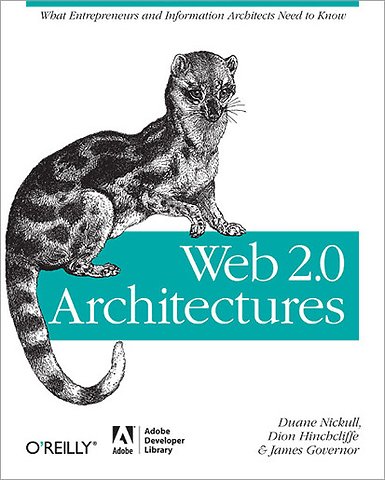


James Governor is Principal Analyst and founder of RedMonk. He leads coverage in the enterprise applications space, assisting clients with application development, integration middleware and systems management issues, as they relate to operational and business process optimization.
Meer over de auteursWeb 2.0 Architectures
What Entrepreneurs and Information Architects Need to Know
Samenvatting
Web 2.0 is more pervasive than ever, with business analysts and technologists struggling to comprehend the opportunity it represents. So what exactly is Web 2.0 - a marketing term or technical reality? This fascinating book finally puts substance behind the phenomenon by identifying the core patterns of Web 2.0, and by introducing an abstract model and reference architecture to help you take advantage of them.
In ´Web 2.0 Architectures´, authors Duane Nickull, Dion Hinchcliffe, and James Governor - who have 40 years of combined experience with technical specifications and industry trends - examine what makes successful Web 2.0 services such as Google AdSense, Flickr, BitTorrent, MySpace, Facebook, and Wikipedia work. The result is a base of knowledge that developers, business people, futurists, and entrepreneurs can understand and use as a source of ideas and inspiration.
This book reveals:
- A Web 2.0 model: How the classic Client-Server model evolved into a more detailed Web 2.0 model.
- Web 2.0 reference architecture: A generic component view of basic Web 2.0 patterns that can be repurposed for other commercial ventures.
- Specific Web 2.0 patterns: How service oriented architecture (SOA), Software as a Service (SaaS), participation-collaboration, mashups, rich user experience, collaborative tagging systems (Folksonomy), and more can be used in your business.
If you want to understand what makes Web 2.0 tick, and how it will enhance your business, Web 2.0 Architectures takes you right to the core.
Specificaties
Over Dion Hinchcliff
Over Duane Nickull
Inhoudsopgave
1. An Architect's View of the Web
-Looking for Web 2.0
-Capturing Web 2.0 Knowledge with Patterns and Architecture
2. A Different View of the Internet
-Best Practices for Forensic Architecture
-Internet Aspects
3. Dissecting Web 2.0 Examples
-DoubleClick and Google AdSense
-Ofoto and Flickr
-Akamai and BitTorrent
-MP3.com and Napster
-Britannica Online and Wikipedia
-Personal Websites and Blogs
-Screen Scraping and Web Services
-Content Management Systems and Wikis
-Directories (Taxonomy) and Tagging (Folksonomy)
-More Hints for Defining Web 2.0
4. Modeling Web 2.0
-A New Client/Server Model for Web 2.0
-Time Magazine's Person of the Year: You (and Web 2.0)
5. A Reference Architecture for Developers
-About Reference Architectures
-The Web 2.0 Reference Architecture
-Architectural Models That Span Tiers
-Consistent Object and Event Models
6. From Models to Patterns
-A Metamodel for Architectural Patterns
-The Pattern Presentation Template
7. Specific Patterns of Web 2.0
-The Service-Oriented Architecture Pattern
-The Software as a Service (SaaS) Pattern
-The Participation-Collaboration Pattern
-The Asynchronous Particle Update Pattern
-The Mashup Pattern
-The Rich User Experience Pattern
-The Synchronized Web Pattern
-The Collaborative Tagging Pattern
-The Declarative Living and Tag Gardening Pattern
-The Semantic Web Grounding Pattern
-The Persistent Rights Management (PRM) Pattern
-The Structured Information Pattern
-Summary
8. Where Are We Going from Here?
-Web 2.0 Offshoots
-A Timeless Way to Build Software 2.0
-The Timeless Way of Building Software: Inspiration for the Next Generation of Web Software
-Creating Open Services That Last (and That Anyone Can Use)
-Web 2.0 into the Uncertain Future
Index
Anderen die dit boek kochten, kochten ook
Net verschenen
Rubrieken
- aanbestedingsrecht
- aansprakelijkheids- en verzekeringsrecht
- accountancy
- algemeen juridisch
- arbeidsrecht
- bank- en effectenrecht
- bestuursrecht
- bouwrecht
- burgerlijk recht en procesrecht
- europees-internationaal recht
- fiscaal recht
- gezondheidsrecht
- insolventierecht
- intellectuele eigendom en ict-recht
- management
- mens en maatschappij
- milieu- en omgevingsrecht
- notarieel recht
- ondernemingsrecht
- pensioenrecht
- personen- en familierecht
- sociale zekerheidsrecht
- staatsrecht
- strafrecht en criminologie
- vastgoed- en huurrecht
- vreemdelingenrecht





